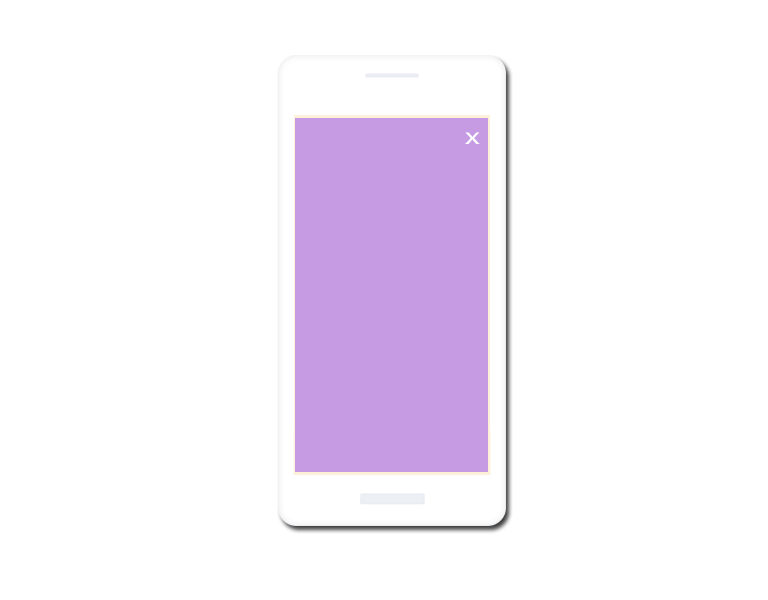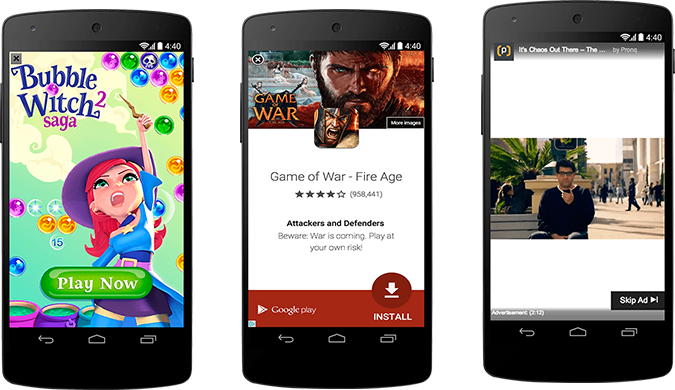Mobile Ad Formats Lab #4 — Interstitial Ads
Interstitial ads are one of the most common ad formats used on mobile nowadays. They are full screen ads that appear as an overlay upon an app. Interstitials are usually shown at different transition points or natural breaks, such as between activities or levels in games. They require an action by the user who can either dismiss or click on the ad.
Within an interstitial, different types of media can be found such as static images, videos, playable ads, surveys and others.
Interstitials are also one of the most popular ad formats on web. When they appeared on mobile apps, they resolved one of the biggest pains for advertisers looking to enter the mobile space, the limited real estate available on mobile.

Marketer’s perspective
| Ideal for storytelling and brand awareness
Mobile interstitials are of high demand among advertisers and brands, so it’s really interesting to see why marketers prefer them.
Pros
A format that grabs user’s attention
Mobile interstitials render in full screen, covering the user’s app and require an action by the user who can either dismiss or click on the ad. They are usually visually appealing and can easily grab user’s attention , resolving issues like banner blindness which can be found in banner ad format.
Perfect for brands
Interstitials, by taking advantage of the full screen experience on mobile, are ideal for storytelling and can make a brand stand out. There is enough room for a proper marketing message achieving this way a high memorisation rate.
Advanced targeting options
Since interstitials are a very popular format among the mobile publishers community, advertisers can have instant reach to millions of users and advanced targeting options on a global level.
Cons
Content requires more work
Mobile interstitials cover the full screen space of an app and therefore require much more work from an advertiser’s perspective, to create compelling content.

Publisher’s perspective
| A high converting format
Interstitial ad format is heavily used by the publishers community too. Some of the pros and cons of using interstitial ads within a mobile app can be found below.
Pros
Easy to set up
Interstitial ads are shown as an overlay, therefore there is no need for changes in the UI of an app, making them easy to integrate.
Increased fill rate
Interstitial ads are quite popular among brands and performance mobile advertisers, resulting to high fill rates.
High conversions
Interstitial ads force the user to either click to dismiss the full screen ad or click on it. Therefore, they have an excellent level of user engagement and high click through rates, resulting to high conversions.
Cons
Decrease in retention
If publishers overuse interstitials and do not follow best practises, they can dramatically affect user engagement and retention within their app, resulting to app uninstalls.
Highly intrusive
Since interstitials render in full screen on top of an app, they can be highly intrusive for the users if misplaced to interrupt the flow of an app and can create user frustration. In some cases, users also have to wait for a few minutes prior being able to disclose the ad. Some users might find that irritating.
Placement thought process
Placement of interstitial ads within an app requires extensive thought during the design phase in order to properly be included in the monetization strategy. The right time and place to show an interstitial ad is really important. User emotions are equally important when the ad is shown and can heavily affect conversions.
In this article we tried to understand the interstitial ad format both from the perspective of the app publisher but also from the side of the marketer. In the next article we will discuss some best practices when using interstitial ads, along with tips and tricks, followed by some real world examples.
Do you want to distribute your survey? Pollfish offers you access to millions of targeted consumers to get survey responses from $1 per complete. Launch your survey today.
Global GSK Shingles Survey Insights
Original Insights,The Pollfish Blog
February 24, 2024
Shingles misconceptions: new global survey commissioned and funded by GSK highlights widespread…
B2B Sales Emails: Are they Effective or a Nuisance?
Original Insights,The Pollfish Blog
September 6, 2022
Are B2B sales emails a thorn in your side? Do they drive you crazy? Virtually all white-collar…
